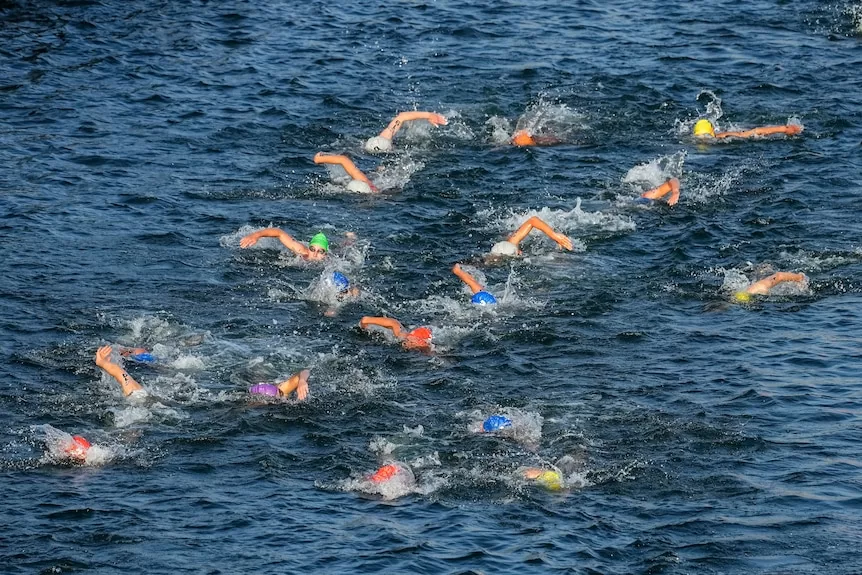- In short: E. coli levels in the Seine frequently exceeded safe levels according to European standards over the first eight days of June.
- A roughly $2.25 billion investment has been made ahead of the Olympics to clean up the river so it can host swimming competitions.
- What’s next? The IOC is confident the races will still go ahead, but the final decision rests with the aquatics and triathlon governing bodies.
Water in the Seine River had unsafe elevated levels of E. coli less than two months before swimming competitions are scheduled to take place in it during the Paris Olympics, according to test results published on Friday.
Contamination levels in the first eight days of June, after persistent heavy rain in Paris, showed bacteria such as E. coli and enterococci existed in the river beyond the limits judged safe for athletes.
The report was published by monitoring group Eau de Paris one day after a senior International Olympic Committee (IOC) executive said there were “no reasons to doubt” races will go ahead as scheduled in in a historic downtown stretch of the Seine near the Eiffel Tower.
“We are confident that we will swim in the Seine this summer,” IOC official Christophe Dubi said on Thursday at an online briefing, after hearing an update from city officials and Olympic organisers.
The first Olympic event in the cleaned-up Seine is the men’s triathlon, including a 1.5-kilometre swim, on the morning of July 30. The women’s triathlon is the next day, and a mixed relay event is due to take place on August 5.
Marathon swimming races over 10 kilometres for women and men are scheduled on August 8 and 9, respectively.
Final safety decision in doubt
According to European standards, the safe limit for E. coli is 900 colony-forming units per 100 millilitres.
During the first eight days of June, test results showed that E. coli levels frequently exceeded these thresholds. Enterococci levels were better, mostly staying within safe limits.
The tests indicated an improvement, from high contamination levels on June 1 to more acceptable levels by June 9, mainly due to improved weather.
Despite the IOC’s publicly expressed confidence, the final decision as to whether the water is safe for athletes rests with the governing bodies of the individual sports due to take place, World Aquatics and World Triathlon.
The World Triathlon Federation uses the same criteria as the European standards to determine sufficient water quality for competitions.
The safety of the Seine water for the Olympics has been in doubt since some test events scheduled last August were cancelled, also after unseasonal heavy rains.
Massive clean-up program underway
Swimming in the Seine would have been unthinkable to many in France’s capital until only recently.
Like other rivers in major cities, the Seine’s water quality can be impacted by many things, from chemical dumping to boat traffic.
Rainwater also infiltrates the sewer system, and to prevent street flooding, the excess water, carrying faecal bacteria, is diverted into the Seine.
To address this, a massive reservoir capable of storing 50,000 cubic metres of water during heavy rainfall was inaugurated in May.
It was part of a roughly $2.25 billion investment ahead of the Olympics to clean up the historically polluted waterway.
Earlier this week, Paris’s mayor, Anne Hidalgo, doubled down on her promise to take a dip in the river before the start of the competition.
On Tuesday, she confirmed that her swim was postponed until after the snap elections in France, which end on July 7.
AP/ABC
